Buck’s Backyard Mural now on Otocast
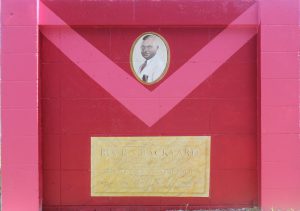 The Buck’s Backyard Mural tells stories centered around McCollum Hall, which became the heart of Dunbar in 1938 when entrepreneur Clifford “Buck” McCollum, Sr., and his wife, Gertrude, opened a much-needed commercial and recreational space at the intersection of Anderson Avenue and Cranford Street. When he built McCollum Hall in 1938, Buck opened a liquor store in one of the building’s ground
The Buck’s Backyard Mural tells stories centered around McCollum Hall, which became the heart of Dunbar in 1938 when entrepreneur Clifford “Buck” McCollum, Sr., and his wife, Gertrude, opened a much-needed commercial and recreational space at the intersection of Anderson Avenue and Cranford Street. When he built McCollum Hall in 1938, Buck opened a liquor store in one of the building’s ground 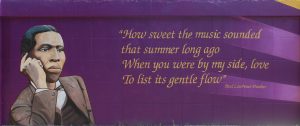 floor rental spaces and leased the other units to a shoe store, clothier, barber shop, coffee house and grocery store.
floor rental spaces and leased the other units to a shoe store, clothier, barber shop, coffee house and grocery store.
While each drew customers on a daily basis, it was the upstairs dance hall that energized the community and contributed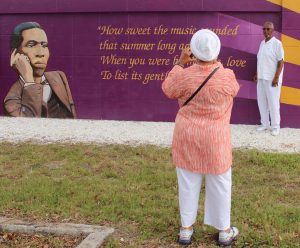 to Dunbar’s social standing. This was the era of Segregation, and entertainers of color were denied access to white establishments. So they performed in clubs, juke joints and theaters in African-American neighborhoods just like Dunbar that came to be known as the Chitlin’ Circuit.
to Dunbar’s social standing. This was the era of Segregation, and entertainers of color were denied access to white establishments. So they performed in clubs, juke joints and theaters in African-American neighborhoods just like Dunbar that came to be known as the Chitlin’ Circuit.
The Chitlin’ Circuit took its name from cast-off pork parts – hog intestines that were boiled and then fried.  But there was nothing cast-off about the music that patrons heard on Chitlin’ Circuit stops. Chitlin’ Circuit venues like McCollum Hall became the incubators of some of this country’s greatest blues,
But there was nothing cast-off about the music that patrons heard on Chitlin’ Circuit stops. Chitlin’ Circuit venues like McCollum Hall became the incubators of some of this country’s greatest blues, 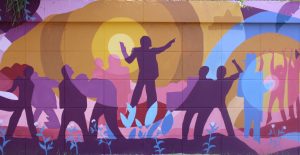 jazz and rock-and-roll musicians. Count Basie, Louis Armstrong, B.B. King, Lionel Hampton, Otis Redding, Lucky Milliner and Duke Ellington and his orchestra were among the Black musicians who performed at McCollum Hall. But James Brown, Little Richard, Ray Charles, Wilson Pickett,
jazz and rock-and-roll musicians. Count Basie, Louis Armstrong, B.B. King, Lionel Hampton, Otis Redding, Lucky Milliner and Duke Ellington and his orchestra were among the Black musicians who performed at McCollum Hall. But James Brown, Little Richard, Ray Charles, Wilson Pickett, 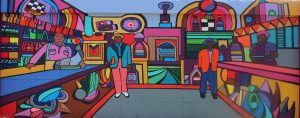 Muddy Waters, Fats Domino, Marvin Gaye, Billie Holiday, Aretha Franklin, Ella Fitzgerald, Tina Turner, Sam Cooke, the Isley Brothers and even Jimi Hendrix all got their start, honed their performance skills and developed their unique sounds
Muddy Waters, Fats Domino, Marvin Gaye, Billie Holiday, Aretha Franklin, Ella Fitzgerald, Tina Turner, Sam Cooke, the Isley Brothers and even Jimi Hendrix all got their start, honed their performance skills and developed their unique sounds  and flamboyant personas on the Chitlin’ Circuit. And as the rhythm sections of the bands that toured with these and other musicians began insinuating gospel backbeat into their performances, the
and flamboyant personas on the Chitlin’ Circuit. And as the rhythm sections of the bands that toured with these and other musicians began insinuating gospel backbeat into their performances, the 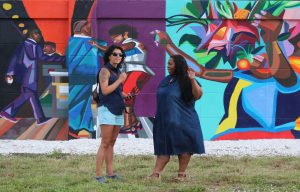 circuit eventually, inexorably, gave birth to a brand new genre – soul.
circuit eventually, inexorably, gave birth to a brand new genre – soul.
The Buck’s Backyard mural tells these and other stories related to McCollum Hall.
A Guidebook has been written that shares the historical research conducted by artists Erik has now been converted into audio that are available on Otocast, 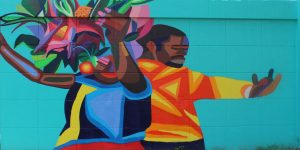 a free mobile app that contains audios, text and historic photos for all of the City of Fort Myers outdoor artworks and nearly two dozen of its historic buildings.
a free mobile app that contains audios, text and historic photos for all of the City of Fort Myers outdoor artworks and nearly two dozen of its historic buildings.
Go here to access the “Fort Myers Guide” on Otocast.
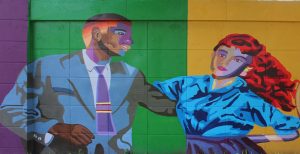 When you go there, you will land on a map of the City of Fort Myers. Click on the bright yellow pin, and photos of the Buck’s Backyard mural panels will appear in the scroll at the bottom of the page. Rick click on a photo and text will appear that provides background information about that panel.
When you go there, you will land on a map of the City of Fort Myers. Click on the bright yellow pin, and photos of the Buck’s Backyard mural panels will appear in the scroll at the bottom of the page. Rick click on a photo and text will appear that provides background information about that panel. 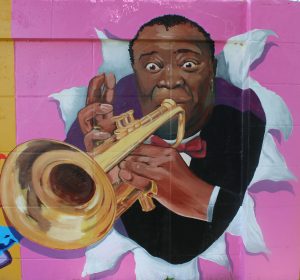 Click on “Gallery” to see photographs of the panel and the historical images on which it is based. And click on the around in the white circle at the very bottom to hear esteemed Fort Myers actor, director and theater educator Sonya McCarter tell you all about the panel you are visiting.
Click on “Gallery” to see photographs of the panel and the historical images on which it is based. And click on the around in the white circle at the very bottom to hear esteemed Fort Myers actor, director and theater educator Sonya McCarter tell you all about the panel you are visiting.
At present, 14 of Buck’s Backyard’s 23 panels are now on Otocast. The remainder will uploaded shortly.
If 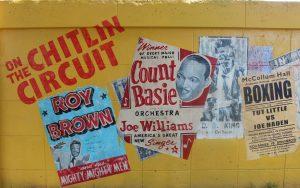 you are new to Otocast, the app is free and available for download in your phone’s app store and on Google Play. Otocast works through geo-location mapping. Users don’t need to know anything about an artwork or historic building they happen upon. There’s no need to look for a plaque or QR Code. Simply tap on the app and the guide automatically
you are new to Otocast, the app is free and available for download in your phone’s app store and on Google Play. Otocast works through geo-location mapping. Users don’t need to know anything about an artwork or historic building they happen upon. There’s no need to look for a plaque or QR Code. Simply tap on the app and the guide automatically 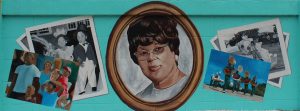 comes up, providing access to an array of information not only about Buck’s Backyard, but the City’s other public artworks and historic points of interest.
comes up, providing access to an array of information not only about Buck’s Backyard, but the City’s other public artworks and historic points of interest.
In addition 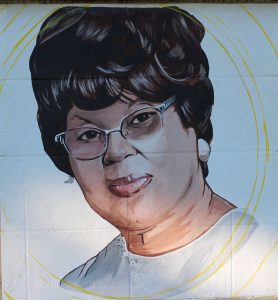 to 17 historic points of interest, the Fort Myers Guide also contains narrative, photos and audios for 49 murals and 30 other artworks scattered about town.
to 17 historic points of interest, the Fort Myers Guide also contains narrative, photos and audios for 49 murals and 30 other artworks scattered about town.
By virtue of its audio component, Otocast is like having your very own tour guide who knows all the facts, figures and inside stories about the artworks and historic buildings you see. In fact, in the other towns and cities where Otocast is already in use the app serves as a platform for self-guided audio tours that encourage exploration and discovery, helping people gain a  better appreciation of their cultural legacy. This feature is particularly useful in a town like Fort Myers, where many of the century-old buildings and pieces in the city’s public art collection encapsulate
better appreciation of their cultural legacy. This feature is particularly useful in a town like Fort Myers, where many of the century-old buildings and pieces in the city’s public art collection encapsulate 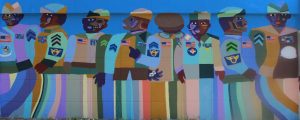 tales about the pioneers who built a rough-and-tumble cow town out of the remnants of an old wooden frontier outpost in the years following the end of the Civil War.
tales about the pioneers who built a rough-and-tumble cow town out of the remnants of an old wooden frontier outpost in the years following the end of the Civil War.
Otocast currently hosts 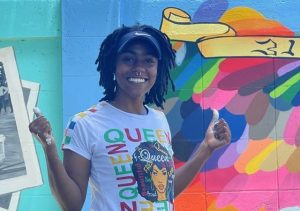 guides containing in excess of 4,500 points of interest in more than 200 cities in 90+ countries.
guides containing in excess of 4,500 points of interest in more than 200 cities in 90+ countries.
June 14, 2024.
RELATED POSTS
- Fort Myers adds historic points of interest to Otocast mobile phone app
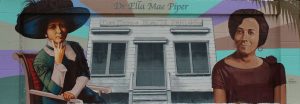 Discover the history of the Murphy-Burroughs Home on Otocast
Discover the history of the Murphy-Burroughs Home on Otocast- Text, photos and audio for Casa Rio now on Otocast
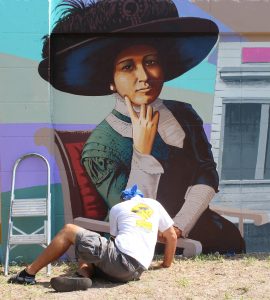 Text, photos and audio for Dean Hotel now on Otocast
Text, photos and audio for Dean Hotel now on Otocast- Text, photos and audio for First National Bank building on Otocast
- Text, photos and audio for Heitman-Evans Hardware Store on Otocast
- Text, photos and audio for Kress Building added to Otocast














 Tom Hall is both an amateur artist and aspiring novelist who writes art quest thrillers. He is in the final stages of completing his debut novel titled "Art Detective," a story that fictionalizes the discovery of the fabled billion-dollar Impressionist collection of Parisian art dealer Josse Bernheim-Jeune, thought by many to have perished during World War II when the collection's hiding place, Castle de Rastignac in southern France, was destroyed by the Wehrmacht in reprisal for attacks made by members of the Resistance operating in the area. A former tax attorney, Tom holds a bachelor's degree as well as both a juris doctorate and masters of laws in taxation from the University of Florida. Tom lives in Estero, Florida with his fiancee, Connie, and their four cats.
Tom Hall is both an amateur artist and aspiring novelist who writes art quest thrillers. He is in the final stages of completing his debut novel titled "Art Detective," a story that fictionalizes the discovery of the fabled billion-dollar Impressionist collection of Parisian art dealer Josse Bernheim-Jeune, thought by many to have perished during World War II when the collection's hiding place, Castle de Rastignac in southern France, was destroyed by the Wehrmacht in reprisal for attacks made by members of the Resistance operating in the area. A former tax attorney, Tom holds a bachelor's degree as well as both a juris doctorate and masters of laws in taxation from the University of Florida. Tom lives in Estero, Florida with his fiancee, Connie, and their four cats.